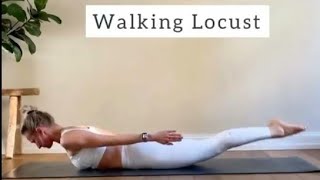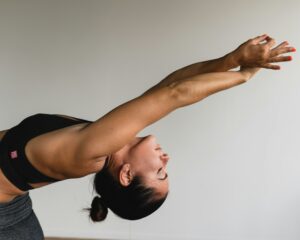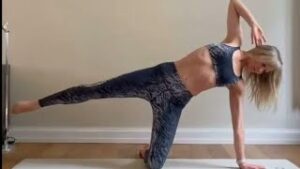29 , 1 views today
The Importance of Strong Glutes for Walking: Exercises to Strengthen Your Hips and Lower Back
Table of Contents
- Introduction
- The Role of Glutes in Walking
- Exercises to Strengthen Glutes and Hips
- Hip Thrusts
- Lateral Banded Walks
- Curtsy Lunges
- Benefits of Strong Glutes
- Reduced Back Pain
- Improved Posture
- Increased Power and Performance
- Conclusion
Introduction
Strong glutes are not only important for aesthetic reasons but also play a crucial role in supporting the lower back muscles during walking and other physical activities. The gluteal muscles, consisting of the gluteus maximus, gluteus medius, and gluteus minimus, work together to provide stability, power, and proper alignment to the hips and lower body
The Role of Glutes in Walking
During walking, the glutes are responsible for extending the hip, which propels the body forward. The gluteus maximus, the largest of the three glute muscles, is the primary hip extensor and assists in keeping the body upright. The gluteus medius and minimus help stabilize the hip joint and prevent excessive inward rotation of the leg, which can lead to knee and ankle issues.
Exercises to Strengthen Glutes and Hips
To target all three gluteal muscles and improve walking efficiency, it’s essential to incorporate exercises that challenge the hips and glutes in various planes of motion. Here are three effective exercises to strengthen your glutes and hips:
1. Hip Thrusts
- Lie flat on the ground with your arms at your sides, knees bent, and feet tucked in.
- Engage your core and glute muscles as you push your heels into the ground and lift your hips up, forming a straight line from your knees to shoulders.
- Hold for a moment at the top, then slowly lower back down.
- For added resistance, place a weight (such as a dumbbell or barbell) across your lap.
2. Lateral Banded Walks
- Stand with a resistance band placed around your legs, just above the knees.
- Bend your knees slightly and push your hips back, maintaining a straight back.
- Take 8-10 steps to the right, then 8-10 steps to the left, keeping tension on the band throughout the movement.
- Focus on driving the movement from your hips, not your knees.
3. Curtsy Lunges
- Stand with your feet shoulder-width apart, hands on your hips.
- Step your right leg behind and across your left leg, bending both knees to lower into a lunge.
- Push back up to the starting position and repeat on the other side.
- Keep your torso upright and engage your core throughout the movement.
Benefits of Strong Glutes
Strengthening your glutes can provide numerous benefits for your overall health and performance during walking and other activities.
Reduced Back Pain
Strong glutes help distribute the load more evenly throughout the lower back, hips, and legs, reducing strain on the lower back muscles. By assisting in hip extension and stabilizing the pelvis, the glutes take some of the pressure off the lower back during walking and other movements.
Improved Posture
The gluteal muscles play a crucial role in maintaining proper pelvic alignment and posture. When the glutes are weak, other muscles may compensate, leading to imbalances and poor posture. By strengthening the glutes, you can improve your overall posture, which can reduce the risk of pain and injury.
Increased Power and Performance
The glutes are essential for generating power and force during walking, running, and other physical activities. By strengthening your glutes, you can improve your walking efficiency, increase your speed, and enhance your overall athletic performance.
Conclusion
In conclusion, strong glutes are essential for supporting the lower back muscles during walking and other physical activities. By incorporating exercises that target all three gluteal muscles in various planes of motion, you can improve your walking efficiency, reduce the risk of back pain, and enhance your overall athletic performance. Remember to always prioritize proper form and gradually increase the difficulty of your exercises to avoid injury and maximize the benefits of your glute-strengthening routine.


